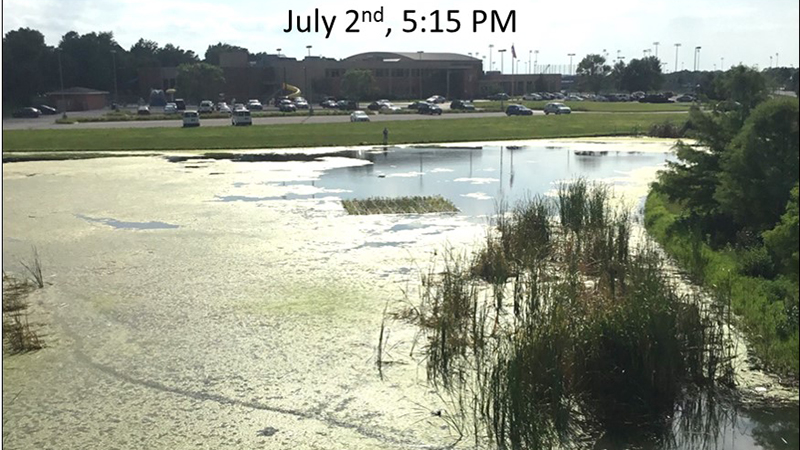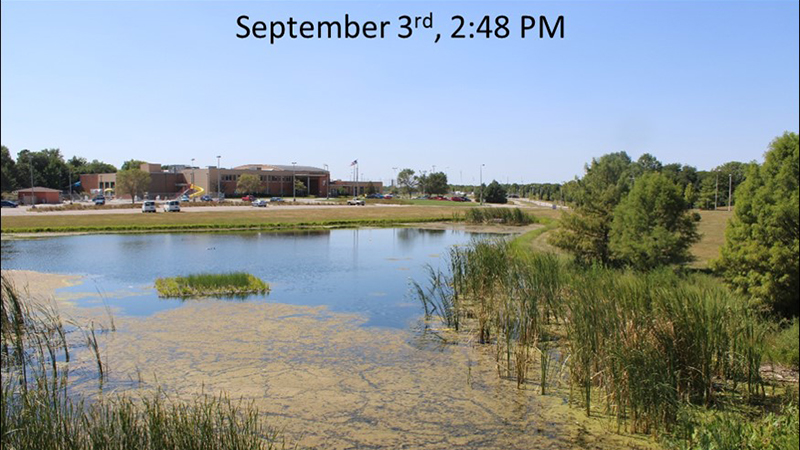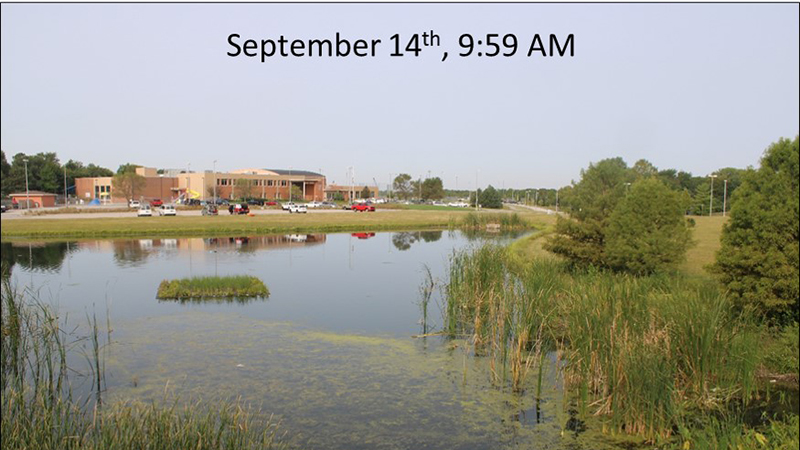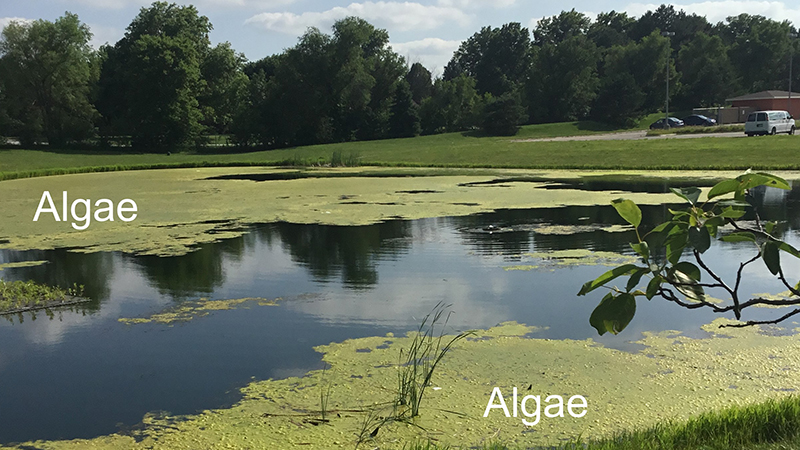
A Biological and Chemical Approach to Restoring Urban Ponds
Collaborator(s): Tiffany Messer, Steve Comfort
Human activities that enrich surface waters with excess nitrogen (N) and phosphorus (P) eventually cause unwanted algae and weeds. Reducing nutrient runoff by limiting excess fertilizer applications and picking up pet waste is the key to healthy ponds. However, once nutrients accumulate in surface water, additional treatments may be needed.

Research:
The University of Nebraska-Lincoln (UNL) is using a biological and chemical approach to remove excess N and P from the water column to suppress algal blooms.
Biological Approach: Floating Treatment Wetlands (FTW) are engineered ecological systems that improve water quality. Wetland plants (13 species) are being employed in floating frameworks, where their exposed roots are suspended in the water. Plant uptake removes nitrogen and phosphorus from the water, while microbes on plant roots convert nitrate to nitrogen gas, which safely returns to the atmosphere.
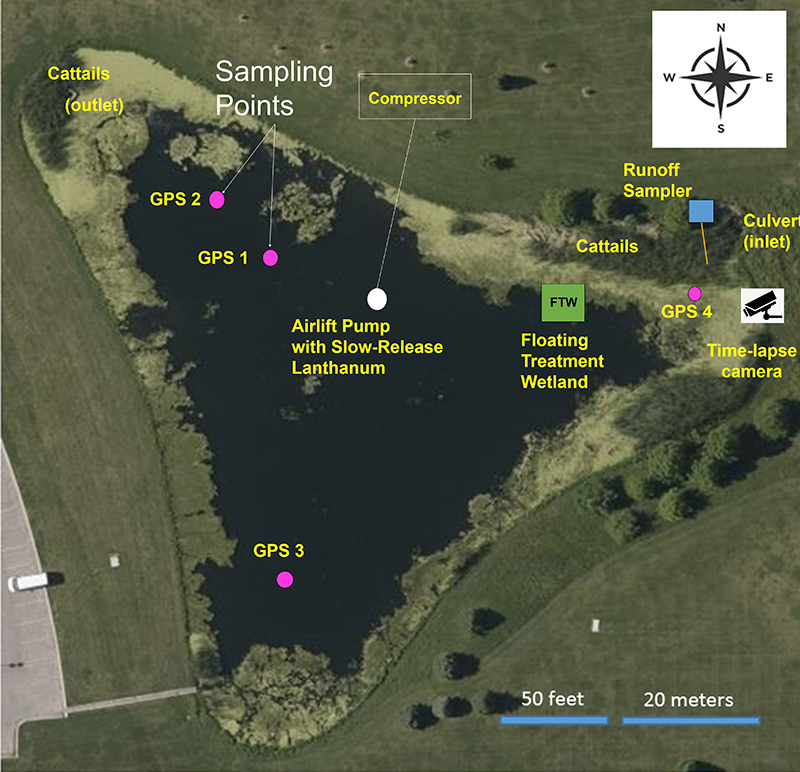
Chemical Approach: Lanthanum is a rare-earth element that can be used to remove excessive phosphorus from nutrient-rich waters. It binds to phosphates in the water, creating lanthanum phosphate, which is a form of phosphorus that algae cannot use for growth. At this site, lanthanum is being slowly delivered by an Airlift pump, which disperses the lanthanum and adds oxygen to the waterbody.
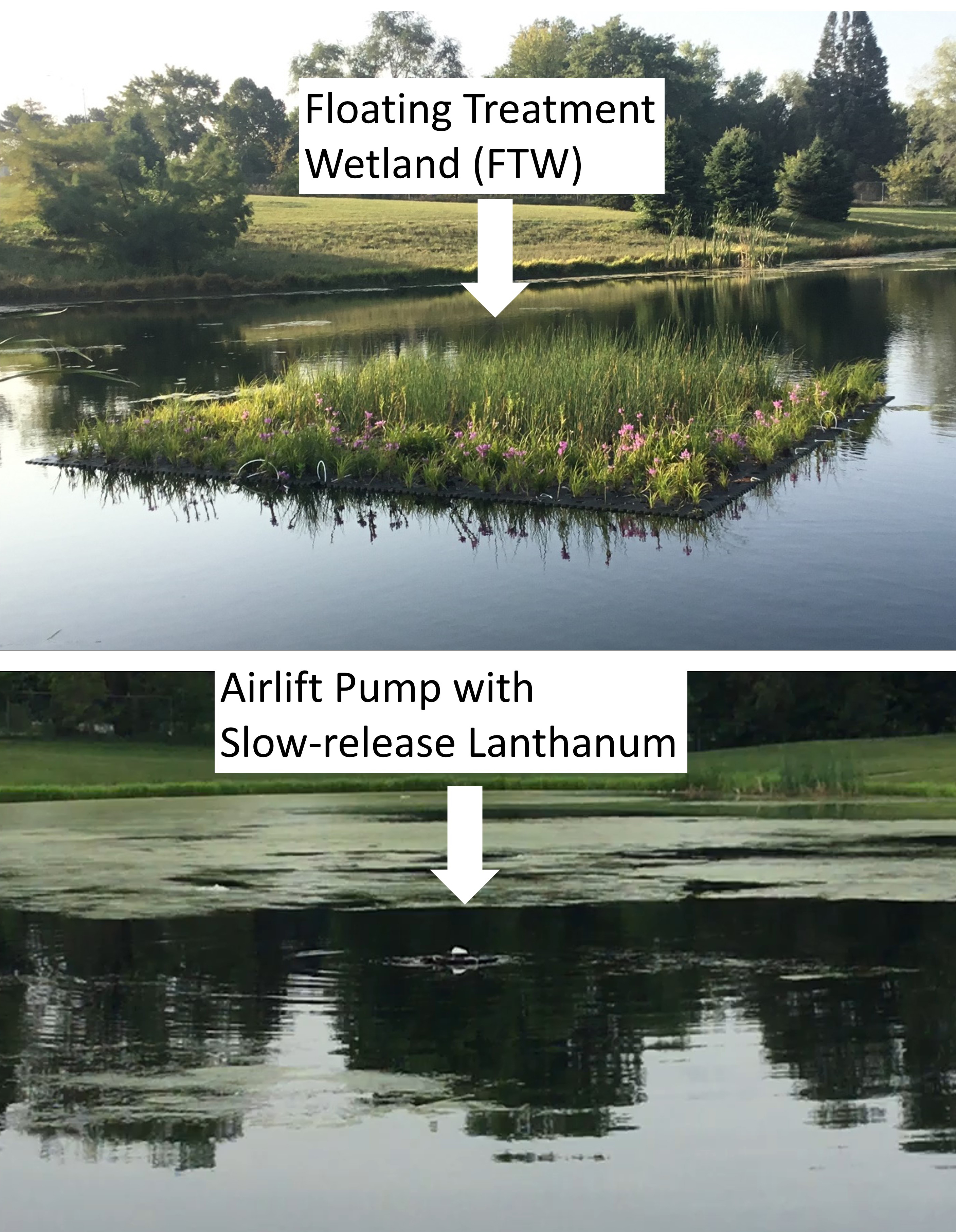
Research and Funding: This unique biological and chemical treatment strategy is an ongoing research project facilitated by faculty and students at the University of Nebraska and with cooperation from Lincoln Parks & Recreation. This project was funded by the Nebraska Department of Environment and Energy (NDEE) Nonpoint Source Water Quality Grants (Section 319).
